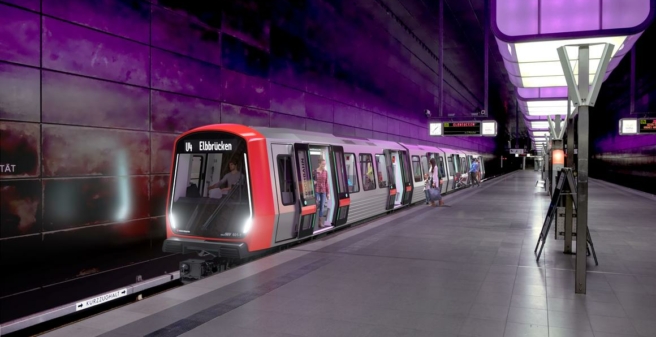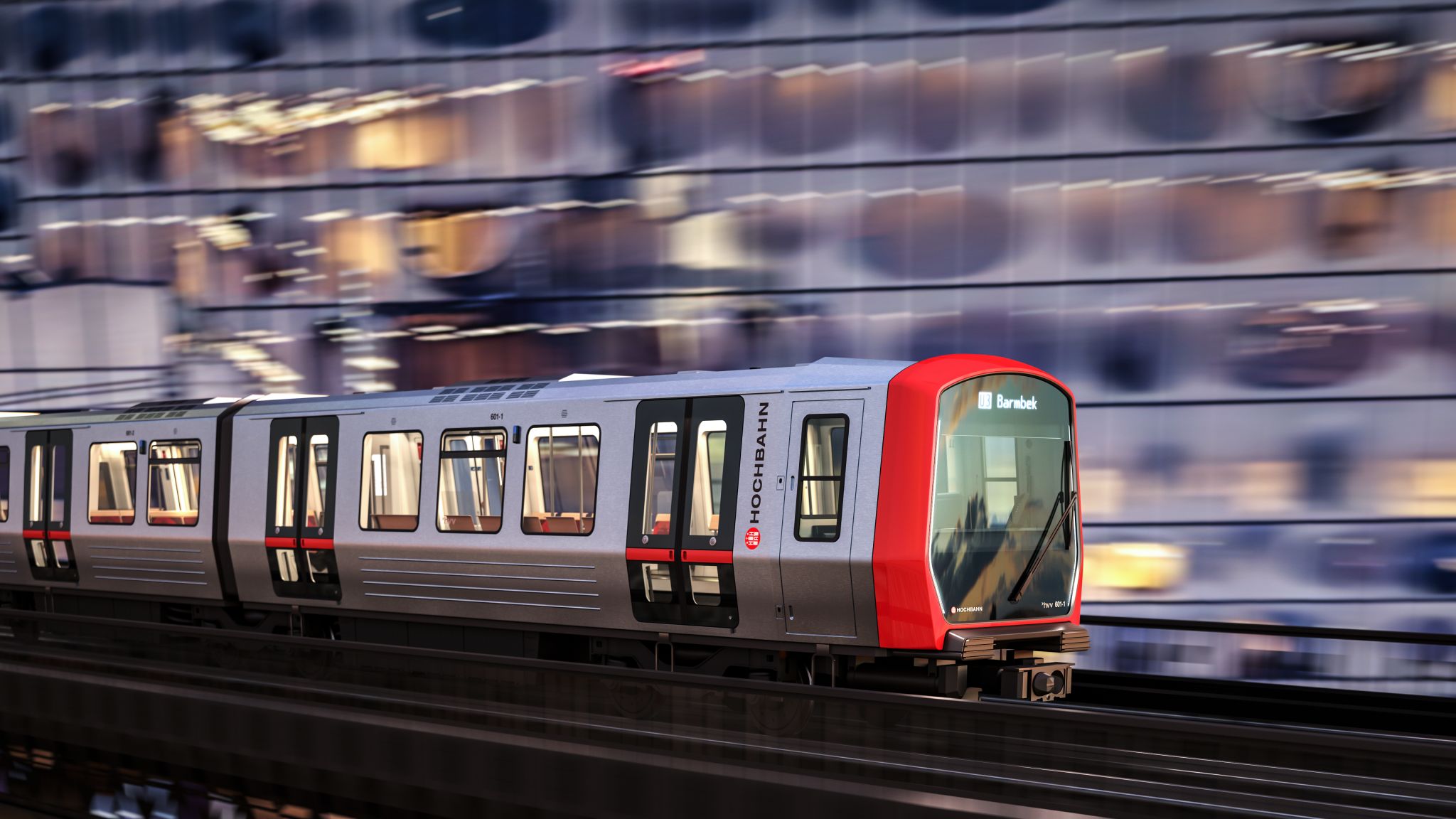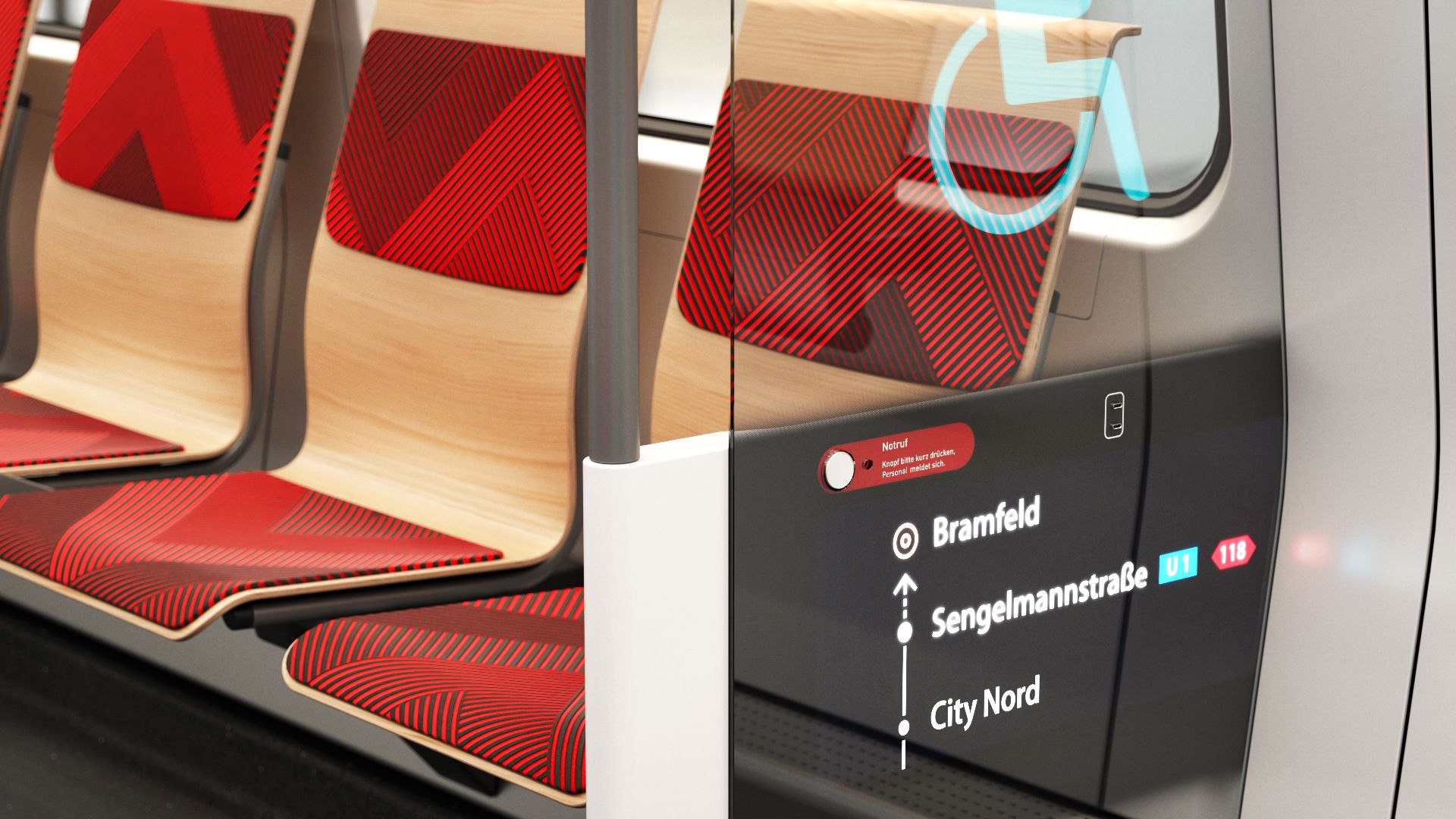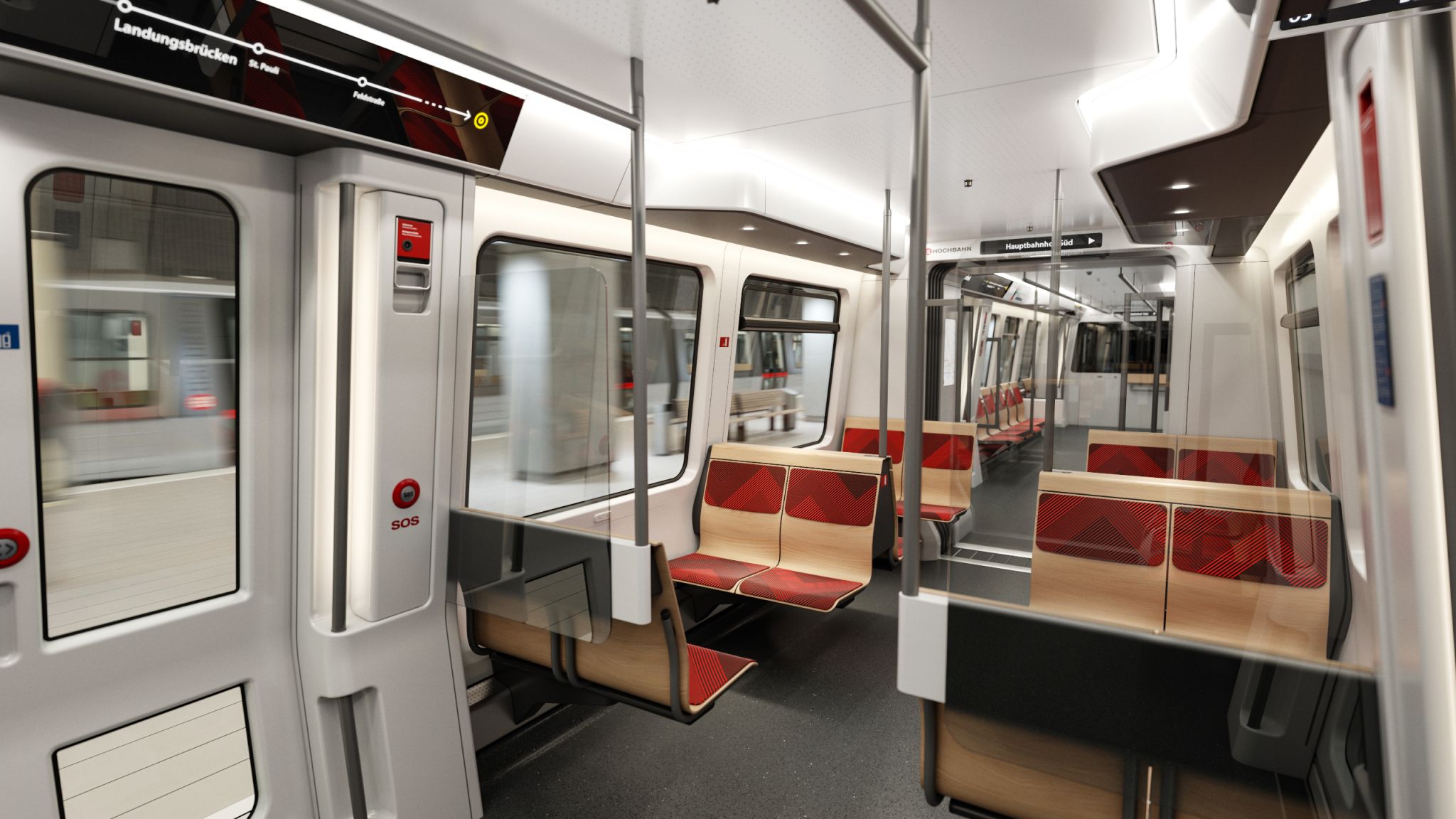
Alstom has signed a framework agreement with Hamburger Hochbahn AG worth up to €2.8 billion. The contract covers the delivery of up to 374 new metro trains, for fully and semi-automated operation. Alstom will also equip the 25 km long and fully automated new metro line U5 with the innovative train-centric CBTC[1] system Urbalis. The first call-off under this framework agreement comprises 48 metro trains and the CBTC equipment for the first section of the U5 line, including five of the 23 new metro stations. The call-off has a volume of around €670 million.
The framework agreement includes 254 semi-automated and 120 fully automated (GoA4[1]) metro trains, all consisting of four cars. The metro trains score with their high capacity, passenger safety and comfort thanks to modern interior design, digital passenger guidance and USB charging connections. The fully automated trains are to be used on the line U5, which is currently under construction. The semi-automated trains will gradually replace the current DT4 vehicles and run semi-automated on parts of the existing network.
Optimised vehicle width
Like the DT5, which has been running in Hamburg since 2011, the DT6 will be made of stainless steel in red and silver, thus continuing the classic Hamburg corporate design. The doors, which are made entirely of glass and make the vehicle appear even more transparent, will be much more striking than on its predecessor. Like its predecessor, the DT6 will be 40 metres long, but will consist of four carriages (DT5: 3 carriages). With the maximum axle load of 10 tonnes specified in Hamburg due to bridges and viaducts, the additional bogie with further axles means that the train can carry more passengers. In addition, the shorter carriage length means that the vehicle dimensions can be optimised for the Hamburg tunnel network. As a result, at 2.73 metres, the DT6 will be significantly wider than the DT5 (2.60 metres) and thus offer space for more passengers. The first call-off includes 7 fully automatic DT6-As and 41 DT6-Fs for driver operation on the existing lines.

Like the DT5, the DT6 vehicles will be fully accessible. However, thanks to the shorter carriage lengths, the DT6 vehicles will be able to get even closer to curved platforms and thus improve accessibility. The DT6 vehicles can run alone (40 metres) or as 80 or 120 metre trains. This means that up to 850 passengers can be transported. As there are no driver’s cabs on the DT6-A, there are even just under 900 passenger seats per 120-metre train.
The U5 metro line will be fully equipped with the state-of-the-art Urbalis signalling solution for driverless operation. This will increase punctuality, frequency and energy efficiency. Once all 23 stations have been completed, the U5 can operate at 90 second intervals. This will enable around 270,000 passengers to be transported quickly and safely on the U5 every day.




The production of the new generation DT6 metros will take place at the Alstom site in Salzgitter, Germany, and is scheduled to start in 2026, with delivery of the first vehicles planned for early 2028. The start of passenger operation on the first section of the new line U5 is scheduled for 2029. The Alstom site in Berlin, Germany, is leading project execution of the digital rail segment, including signalling.
Müslüm Yakisan, President DACH region at Alstom: “This contract is a milestone for Alstom. With the new metro trains and the equipping of the fully automated U5 line with innovative control and safety technology, Hamburg is meeting the growing demand for mobility and sending an international signal for digital and green mobility. All of Hamburg’s metro trains are from Alstom and we are delighted to be able to continue our successful collaboration with Hamburger Hochbahn, which goes back over 60 years. Passengers can look forward to new metro trains with modern passenger information systems, air conditioning, USB charging stations and panoramic windows.”

Robert Henrich, CEO of Hamburger Hochbahn AG: “With the new vehicles, we are modernising our fleet and creating the conditions for fully automatic operation on the U5. The new DT6 will offer customers a completely new experience – from the interior design, transparency and brightness to the modern information systems that provide passengers with optimum orientation. All to the highest technical standard. At the same time, the new subway trains will shape Hamburg’s cityscape like no other vehicle.”

Anjes Tjarks, Senator for Transport and Mobility Transition: “We are securing the future viability of our city with major investments in the expansion of the rail network and in intelligent and efficient transport systems. With the new trains from Alstom, we are bringing more comfort, more space, service and safety to Hamburg’s public transport system and creating a modern, attractive mobility offering for people. As a result, up to 374 new fully and semi-automatic vehicles will be deployed in the city, the first 48 of which will go into operation in the foreseeable future. With this contract, we are laying the foundation for the growth of the Hamburg subway in the coming decades. At the end of 2018, Hochbahn had around 250 vehicles in operation, currently there are 290. The contract will enable Hamburg to increase the number of subway trains in Hamburg by around 50 percent by 2050. In addition, the integration of state-of-the-art signalling technology on the U5 will enable more efficient communication between trains, resulting in more punctual and faster service. This is a real quantum leap for the mobility transition and sustainable transportation.”
We reported on the design study and the tender at the following location:

